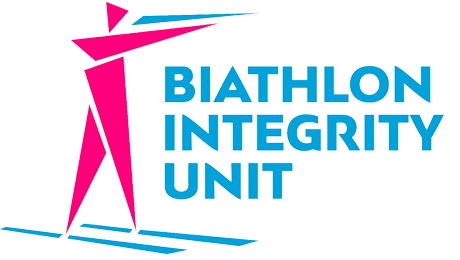Anti-Doping
Registered Testing Pool (RTP)
A minimum of 30 male and 30 female Athletes designated by the Biathlon Integrity Unit comprises the IBU Registered Testing Pool (IBU RTP). Athletes in the IBU RTP are required to comply with the whereabouts requirements of the WADA International Standard for Testing and Investigations.
Additional athletes may be added to the RTP under the following circumstances, as per Chapter D: IBU Anti-Doping Rules, Rule 5.6 of the Integrity Code:
- By virtue of being in the top 20 of any IBU World Cup ranking competition
- When they have a significant change in performance or haematological/steroidal profile
- When they are serving a period of ineligibility
- If they are transferring into Biathlon from another sport
Obligatory for all RTP athletes from May 2023 onwards, and valid for 2 seasons.
Click here to obtain the certificate: https://biathlon.mylearnworlds.com/course/biu-whereabouts-certificate
RETIREMENT & RETURN TO COMPETITION
If an Athlete belonging to the RTP decides to permanently retire from Biathlon competitions, he/she needs to fill out the Retirement Form.
This form must be signed by the Athlete and his/her National Federation and then forwarded to the BIU via mail: antidoping@biathlonintegrity.com
If an Athlete who has retired from Biathlon wants to compete again, he/she must announce this to the BIU by filling out the Return to Competition Form six months prior to the first competition (see Chapter D: IBU Anti-Doping Rules, Rule 5.6 of the Integrity Code).
ADAMS
Under the Code, WADA has an obligation to coordinate anti-doping activities and to provide a mechanism to assist stakeholders with their implementation of the Code.
The Anti-Doping Administration & Management System (ADAMS) was developed for this purpose. It is a Web-based database management system that simplifies the daily activities of all stakeholders and Athletes involved in the anti-doping system.
ADAMS helps the IBU to coordinate its anti-doping measures and comply with the Code.
The system can be used in multiple languages – English, French, German, Russian, Japanese, Spanish, Arabic, Dutch, Finnish and Italian – and the data is only available to organisations with authorisation from the World Anti-Doping Program. Only information/areas relevant to the specific user(s) will be viewable.
ADAMS is a clearinghouse where all data can be stored, in particular laboratory results, TUEs and information on ADRVs. It facilitates the sharing of information amongst relevant organizations and promotes efficiency, transparency and effectiveness in all anti-doping activities.
WHEREABOUTS

The Whereabouts System is the Foundation of an
Effective Anti-Doping Strategy.
What are Whereabouts?
Whereabouts are information provided by a limited number of top elite Athletes about their location to the BIU or their National Anti-Doping Organization (NADO) that included them in their respective Registered Testing Pool (RTP) as part of these top elite Athletes’ anti-doping responsibilities.
Why do Whereabouts work?
Because out-of-competition doping controls can be conducted without notice to Athletes, they are one of the most powerful means of deterrence and detection of doping and are an important step in strengthening Athlete and public confidence in doping-free sport. Accurate whereabouts information is crucial to ensure efficiency of the anti-doping programs, which are designed to protect the integrity of sport and to protect clean Athletes. If you care about clean sport, play your part and provide accurate whereabouts information.
The concept of out-of-competition is not new. Experience has shown that out-of-competition testing is crucial to the fight against doping, in particular because a number of prohibited substances and methods are detectable only for a limited period of time in an Athlete’s body while maintaining a performance-enhancing effect. The only way to perform such testing is by knowing where Athletes are, and the only way to make it efficient is to be able to test Athletes at times at which cheaters may be most likely to use prohibited substances and methods.
Who are Whereabouts rules for?
Whereabouts requirements are for the limited number of top-level Athletes who are in the RTP of either the IBU or their NADO. They were designed to give those top-level Athletes a flexible tool to show their commitment to doping-free sport, as well as appropriate, sufficient and effective privacy protection.
Can others provide Whereabouts information on behalf of an Athlete?
Athletes can have their agent or another representative submit their whereabouts information if they wish to. In team sports, whereabouts information can be submitted by team officials on a collective basis as part of the team’s activities.
However, Athletes are ultimately responsible for their whereabouts. As a result, they cannot avoid responsibility by blaming their representative or the team for filing inaccurate information about their whereabouts or for not updating their whereabouts if they were not at the location specified by them during the 60-minute time-slot.



